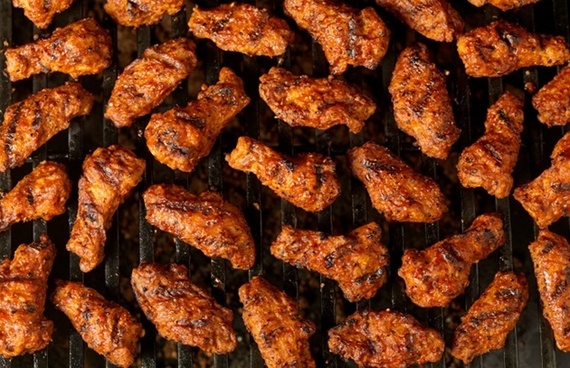Chickens just can't catch a break. On July 29, we celebrated National Chicken Wing Day--an undisguised warm-up for fall tailgating season. We Americans do love our chicken wings. The National Chicken Council predicts we'll eat 28 billion of them before year's end.
For my money, chicken wings rank among the most delectable bites on Planet Barbecue--popular in almost all grilling cultures, from Asia to Africa. And it's no wonder. They're the perfect finger food (which is what you want for tailgating), ideally combining crackling crisp skin with a few bites of tender, flavorful meat on the bone. ("Boneless" wings are an abomination IMHO.)
Asian street food vendors usually present chicken wings whole--a skewer keeps the wings fully extended as they grill, maximizing the wings' exposure to the fire. In the U.S., whole wings are likely to be separated through their two cartilaginous joints into "drumettes"--so called because they resemble mini chicken legs--and "flats," the mid-section of the wing. Both have their partisans. Tips are either discarded or saved for chicken stock.
In my playbook, wings are usually prepared using my smoke-roasting technique, a combination of smoking and indirect grilling that adds delectable smoke flavors to the meat, discourages pesky flare-ups, and ensures crispy skin.
For planning purposes--and you've got to have a plan whether you're cooking in the stadium parking lot or the backyard--allow 40 to 50 minutes for wings to cook to the proper temperature (165 degrees). I know...longer than you would think. If you've smoke-roasted the wings, there will be a bit of pink near the bone; don't be alarmed as that is a chemical reaction between the protein and the smoke. If you haven't added smoke, then there should be no pink by the bone.
SIGN UP for Steven Raichlen's UP IN SMOKE newsletter to learn more about barbecue!
--
Steven Raichlen is the author of the Barbecue! Bible cookbook series and the host of Project Smoke on public television. His web site is BarbecueBible.com.
